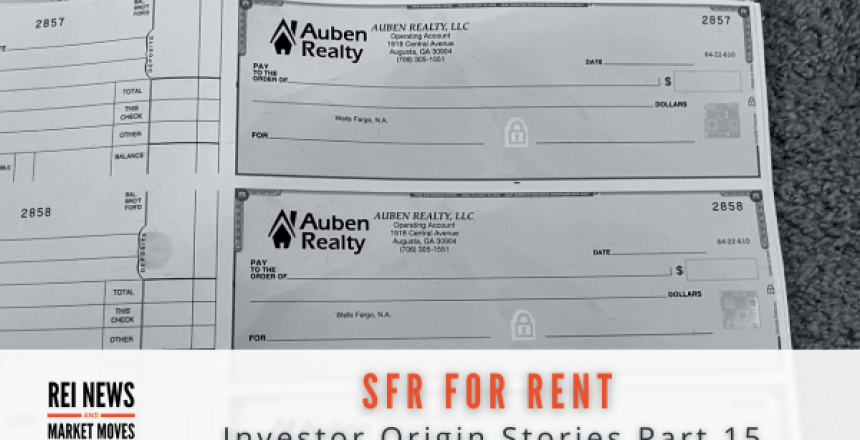SFR for rent
Creating standards to get rid of bleeding heart syndrome…
As we continued to work through our renovation standards, we began to define our leasing standards. It was a very analog process, but, luckily, Natalie loved the forensic portion of tenant background screening. Similar to efforts on the project management side, all of the lessons learned on leasing were learned with pain—a lot of pain.
We learned that no credit was not necessarily good credit, and that people will make up references and blatantly lie about evictions and delinquency on applications. We also quickly came to understand the value of a positive history of previous residency. A positive previous landlord reference (from someone not related to the tenant!) became our holy grail.
We tracked payments with paper notes and consistently followed up with residents about small delinquent balances. Initially, there weren’t good property management software options for managing single family rentals. There were standard multifamily leasing softwares like Yardi, but single family rental management was still off everyone’s radar. Several years later, our incorporation and utilization of a new SFR software, Appfolio, would prove to be a game changer for us, assuming positive control of residency from inception.
Every resident came with a story, and our bleeding hearts consistently led us astray, so we formed leasing guidelines. This was also necessary in order to be compliant with Fair Housing Standards. As important as the previous landlord reference was, the application process really orbited around credit score. Being in affordable housing against the backdrop of a tumultuous economy, we were consistently seeking credit scores above 600.
We tried different minimum credit scores of 600, 580, 560, 550 while also inserting other provisions like double security deposits. We would discover with time that as flawed as credit score algorithms may be, a credit score below 600 meant a diminishing chance our owners were going to be paid. Many years later when we had a much larger case study, we found a huge increase in delinquency and evictions with our residents who had credit scores between 560-580.
The interesting thing about property management without scale is that it is really hard to see residency in a vacuum as just metrics. You are also fundamentally dealing with people and generally people’s largest and most emotional transactions. Back in 2010 and 2011, there was no digital resident experience. So our residents knew us and we knew them—very well.
We knew Felix was not going to pay his $6 portion of non-subsidized rent, even if it meant consecutive $50 late fees and his father coming into the office. After incurring several late fees, Felix even asked for change for his $20 instead of paying several months in advance. We knew Connie was always going to be grateful for her home and—even while going through extensive medical treatments—was always going to have a positive disposition. We knew Willie Ann did not ever intend to leave her rental and is still there a decade later.
For all the positive ways in which we came to learn and know our residents, we also bit hook, line, and sinker on countless “grandmother died, car broke down, and kid is sick” stories. It definitely didn’t help the situation that my team members shared my excess empathy. Many non-paying U-Haul tenants later, I had to completely accept that Bank of America didn’t care what was occurring with my family. My mortgage payment was due when it was due.
The rigidity in policy was also easier to integrate as I began to further notice a pattern of correlation, consistent delinquency, and eviction with those we offered the most assistance to. Affordable income SFR property management can often be a brutal pill to swallow to one’s perception of humanity.
As frustrating as problematic tenants could be, it is hard to describe the immediate gratification of seeing a house transform into a home and an appreciative resident. Because of my contrarian ways, we consistently were on blocks less traveled. Sometimes it worked exceptionally well with our investment spurring on other investors like Second Street in Olde Towne, and sometimes we became the island of bad decisions like our investment on Sharpes Lane in Turpin Hill which was quickly destroyed by vandals.
I often describe those days as waiting for the next person to line up to punch me in the face. But somehow there was enough satisfaction in the good to wash away the struggle.
If you are struggling with your investing journey—and even if you are not—come join our community of events!

